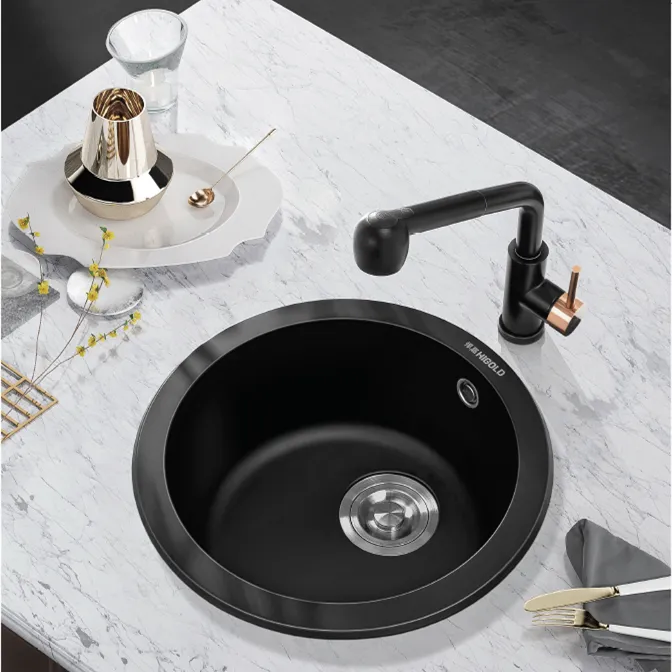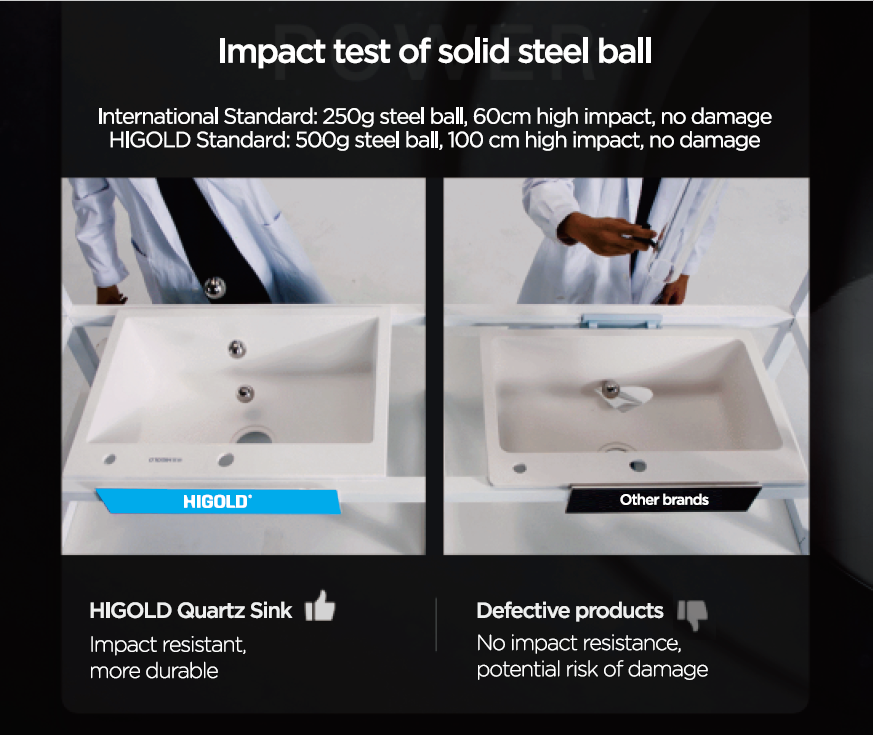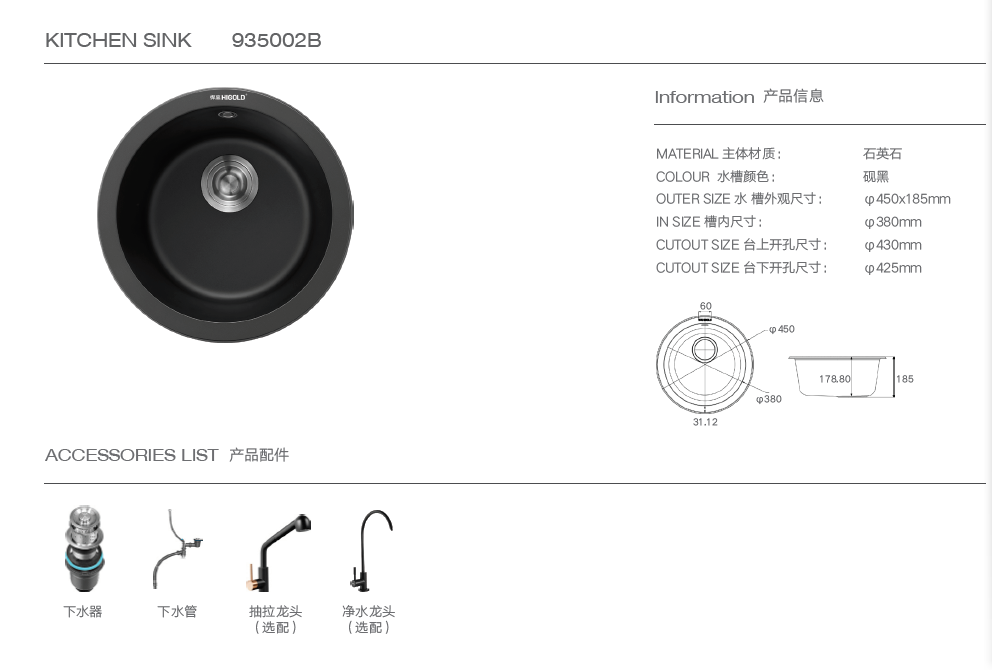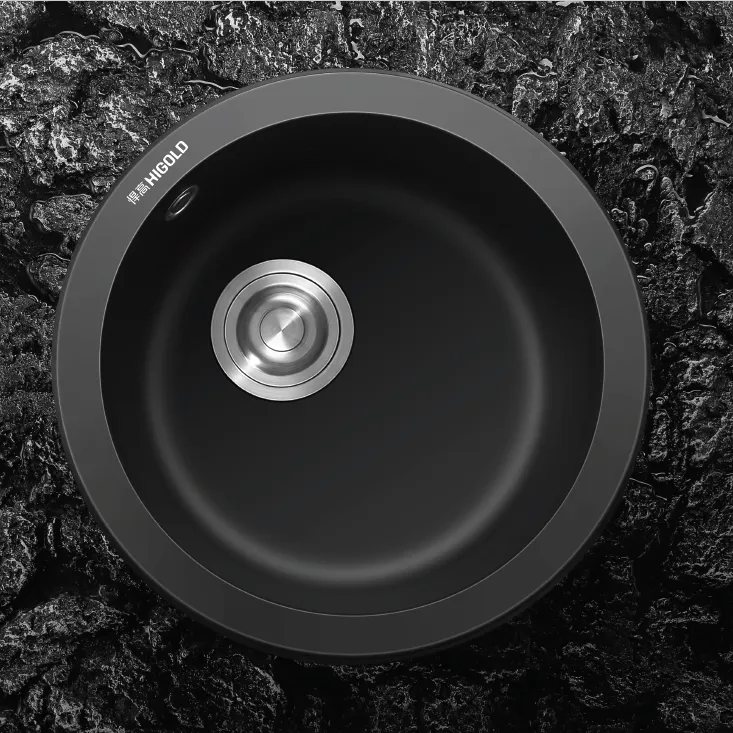The quartz kitchen sink is one of the most frequently used appliances in the home, carrying multiple functions such as washing dishes, processing food, and draining water. Whether the gap between the quartz kitchen sink and the countertop should be filled has become a concern for many consumers. What impact will filling these gaps have on the use of the sink and the maintenance of the countertop? Does filling help extend the service life of the quartz kitchen sink? These issues have attracted the attention of consumers and decoration professionals.
In fact, whether the gap between the quartz kitchen sink and the countertop should be filled is not a single choice, but involves multiple factors, including the type of sink, the material of the countertop, usage habits, and long-term maintenance. This article will analyze this issue in detail from multiple aspects to help consumers understand whether the gap should be filled when installing the quartz kitchen sink, and the possible advantages and disadvantages of filling the gap.

Why is there a gap between the quartz kitchen sink and the countertop?
First of all, we need to clarify what the gap between the quartz kitchen sink and the countertop is and why it exists. Usually, the joint between the sink and the countertop is mainly caused by slight errors during installation, differences in expansion coefficients between different materials, and small gaps between the sink and the countertop. The width of this gap is usually not large, but it may affect the appearance, cleanliness and sealing performance of the sink in daily use.
Different types of quartz kitchen sinks are installed differently with the countertop, and the existence of gaps will also vary. Common sink installation methods include undermount, topmount, and flushmount. In the installation of a countertop sink, the sink is usually located above the countertop, and there is often a gap between the sink and the countertop. This gap may accumulate dirt, residue and moisture, so the necessity of filling this gap has become a question worth discussing.
What are the advantages of filling the gap between the quartz kitchen sink and the countertop?
1. Enhanced waterproof effect
As a high-humidity, high-water flow environment, the area around the quartz kitchen sink is easily splashed by water. If the gap between the sink and the countertop is not properly filled, water and liquid may penetrate into the gap, affecting the material of the countertop. Especially for wooden or artificial stone countertops, water penetration may cause the material to swell, deform, and even cause mildew problems. Filling the gap can effectively prevent water penetration, increase the waterproof performance of the countertop, and avoid moisture problems in the area around the sink.
2. Improve aesthetics
If the gap between the quartz kitchen sink and the countertop is not properly handled, it is easy to cause stains to accumulate and affect the overall appearance. Especially during use, oil stains, food residues, and scale are easy to accumulate in these gaps, which is very troublesome to clean, and sometimes even not cleaned properly, resulting in black water stains or mildew. By filling the gap, not only can the sealing between the quartz kitchen sink and the countertop be improved, but also the overall appearance of the kitchen can be improved, making the countertop look neater and more orderly.
3. Enhance cleaning convenience
If the gap between the quartz kitchen sink and the countertop is not filled, oil stains and residues are easy to accumulate during daily cleaning. Especially when cooking, there are often food residues, oil stains, water stains and other pollutants around the sink. These pollutants will be deposited in the gaps, which is very time-consuming and laborious to clean. After caulking the gaps, these pollutants can be prevented from entering the gaps, making daily cleaning more convenient. Just wipe the surface of the countertop, reducing the trouble when cleaning.
4. Prevent bacteria from growing
The kitchen is an environment that is prone to breeding bacteria, especially in the area around the quartz kitchen sink. The accumulation of moisture and dirt provides favorable conditions for the growth of bacteria and mold. If the gap between the sink and the countertop is not filled, moisture, stains and grease may accumulate for a long time and become a breeding ground for bacteria. Caulking the gap can effectively prevent these problems, reduce the growth of bacteria and mold, and keep the kitchen environment hygienic.

What are the disadvantages of caulking the gap between the sink and the countertop?
Although caulking the gap of the quartz kitchen sink brings many advantages, this practice also has its potential risks and disadvantages, and consumers need to consider them comprehensively when making choices.
1. Difficulty in disassembling the sink
In some cases, caulking the gap may lead to a tighter connection between the quartz kitchen sink and the countertop. This tight connection may cause some trouble when the sink needs to be disassembled, cleaned or replaced. Especially for the above-counter sink, since the sink is installed above the countertop, caulking the gap too tightly may require extra care during disassembly to avoid damaging the countertop and sink.
2. Problems in choosing caulking materials
Appropriate caulking materials are required to caulk the gap between the quartz kitchen sink and the countertop. Common caulking materials include silicone, sealant, glass glue, etc. Although these materials can improve the sealing, it is necessary to pay attention to the durability, water resistance and antibacterial properties of the materials when selecting them. If improperly selected, some caulking materials may deteriorate due to moisture or aging, resulting in the trouble of re-caulking or cleaning, and even water leakage.
In addition, some inappropriate caulking materials may also release harmful gases or chemicals, affecting the air quality of the kitchen. Therefore, when choosing caulking materials, consumers should choose environmentally friendly, non-toxic and high-temperature resistant materials to ensure safe use.
3. Ineffective ventilation
Some kitchen countertops and quartz kitchen sinks have certain air circulation requirements, especially in the design of under-counter sinks. Filling the gaps may hinder the flow of air. The water vapor or moisture at the bottom of the quartz kitchen sink needs to be discharged through the joint area. If these gaps are completely filled, it may affect the ventilation under the sink, causing moisture to be trapped inside the sink, resulting in musty odors or dampness.
4. May cause damage to the countertop
If the gap between the quartz kitchen sink and the countertop is not filled properly, it may cause uneven stress between the sink and the countertop, which may cause the countertop to crack or the sink to loosen. For example, if the inappropriate filling material is used, or the filling process is too strong, it may cause the countertop or sink to deform, affecting its long-term use effect.

How to properly fill the gap between the sink and the countertop?
When deciding whether to fill the gap between the sink and the countertop, consumers should make decisions based on the type of quartz kitchen sink, the material of the countertop, and personal usage habits. If you decide to caulk the gap, here are some effective practices and precautions:
● Choose appropriate caulking materials: Water-resistant, high-temperature resistant, non-toxic and harmless caulking materials are preferred, such as high-quality silicone sealants. Ensure that the caulking materials are durable and have anti-mildew and antibacterial properties.
● Ensure the cleanliness of the countertop and sink: Before caulking, make sure that the gap between the quartz kitchen sink and the countertop is clean, dry, and free of impurities such as oil, dust, etc. Any residual dirt may affect the caulking effect and cause a poor seal.
● Control the density of the caulking: Do not over-fill when caulking to avoid caulking materials entering the sink or drain pipe. The caulking material should be applied evenly to ensure a good seal between the sink and the countertop, but not to completely block the vent.
● Regular inspection and maintenance: After caulking the gap, regularly check whether the caulking material is aging, falling off or damaged. If necessary, it should be repaired in time to avoid problems such as leakage or poor air flow.

Can I Order Customized Kitchen Sinks from Higold?
Yes, at Higold, we specialize in both ODM and OEM projects. We work closely with our clients to design and produce customized quartz kitchen sinks and faucets tailored to their needs. Whether you're a retailer looking to supply exclusive designs or a commercial buyer seeking wholesale options, Higold provides personalized service and competitive prices.


